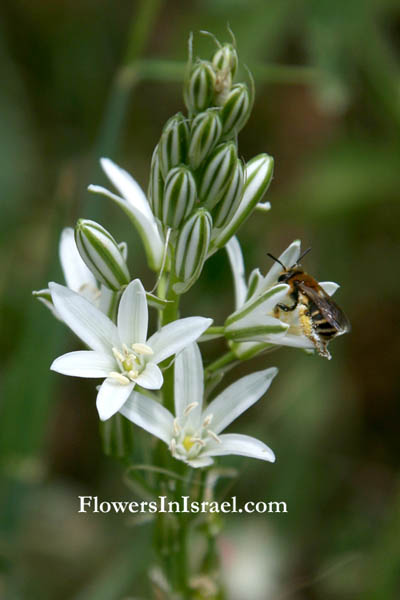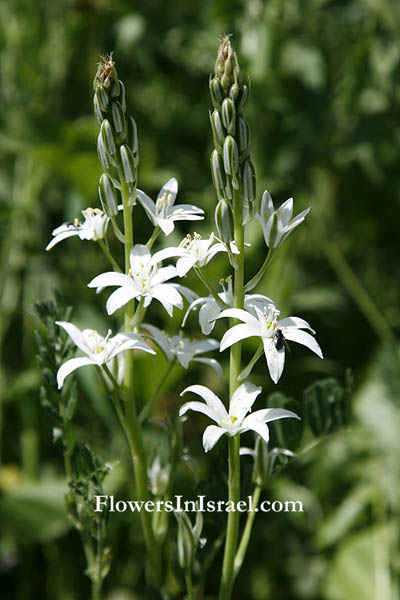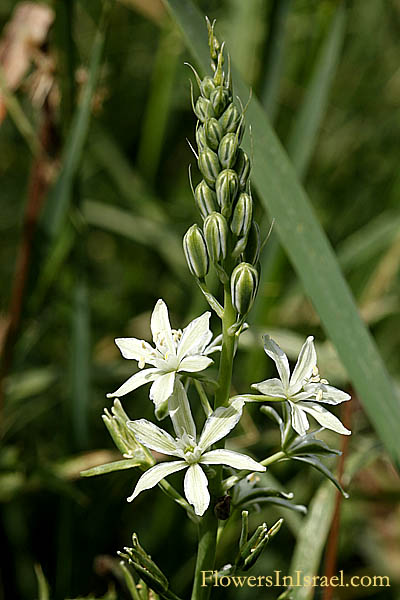Hebrew: נץ-חלב צרפתי, Arabic: نجمة بيت لحم
| Scientific name: | Ornithogalum narbonense L. | |
| Common name: | Southern star of Bethlehem, Narbonne Star-of-Bethlehem | |
| Hebrew name: | נץ-חלב צרפתי | |
| Arabic name: | نجمة بيت لحم | |
| Family: | Liliaceae, שושניים |

|
| Life form: | Geophyte | |
| Stems: | 30-60 cm high; stem stiff, erect; flowering stems standing above leaves up to 60cm high | |
| Leaves: | Rosette, amplexicaule, dull blue-green, shorter than the stem; blade very lengthened, narrow, channelled beneath; leaves not faded during flowering | |
| Flowers: | Hermaphrodite; pyramidal raceme; 20-50 flowers; long bract of 1–2 cm; 6 star-shaped white petals bearing a pale green central vein, while the buds are oval, with longitudinal green and white stripes; 6 stamens have a white filament holding yellow anthers of 4 mm; pollinated by insects | |
| Fruits / pods: | Ovoid and 3-furrowed capsule | |
| Flowering Period: | March, April | |
| Habitat: | Batha, Phrygana, Shrub-steppes | |
| Distribution: | Mediterranean Woodlands and Shrublands, Semi-steppe shrublands, Shrub-steppes, Deserts and extreme deserts, Montane vegetation of Mt. Hermon | |
| Chorotype: | Med - Irano-Turanian | |
| Summer shedding: | Ephemeral |

Derivation of the botanical name: Ornithogalum, ornis ορνισ, ιϑοϛ , a bird, ornith pertaining to birds;galum, milk. Carl Linnaeus (1707 – 1778) says, that the roots of this plant are the Dove's dung (seed pods), which was sold so dear during the siege of Samaria, (II Kings 6:25); "which interpretation appears highly probable from the obvious identity of the name ornithogalum (Bird's-milk), and which was applied to this plant by many of the ancient writers, as Dioscorides, Pliny, &c.,and from the circumstance that they are, when boiled, eaten at the present day by the poorer inhabitants of Palestine, where grows in abundance; whence its English name Star of Bethlehem." narbonense,Of or from Narbonne, a city in southern France in the Languedoc-Roussillon région. The Hebrew name Netz-Halav, נץ-חלב, Hawk-milk is officially designated for the genus Ornitogalum, because the scientific name means bird milk, which corresponds to the meaning of the words hawk and milk. Netz, netza, the button in the plant from which the flower and fruit develop.

Location: Bene Zion Nature Reserve |